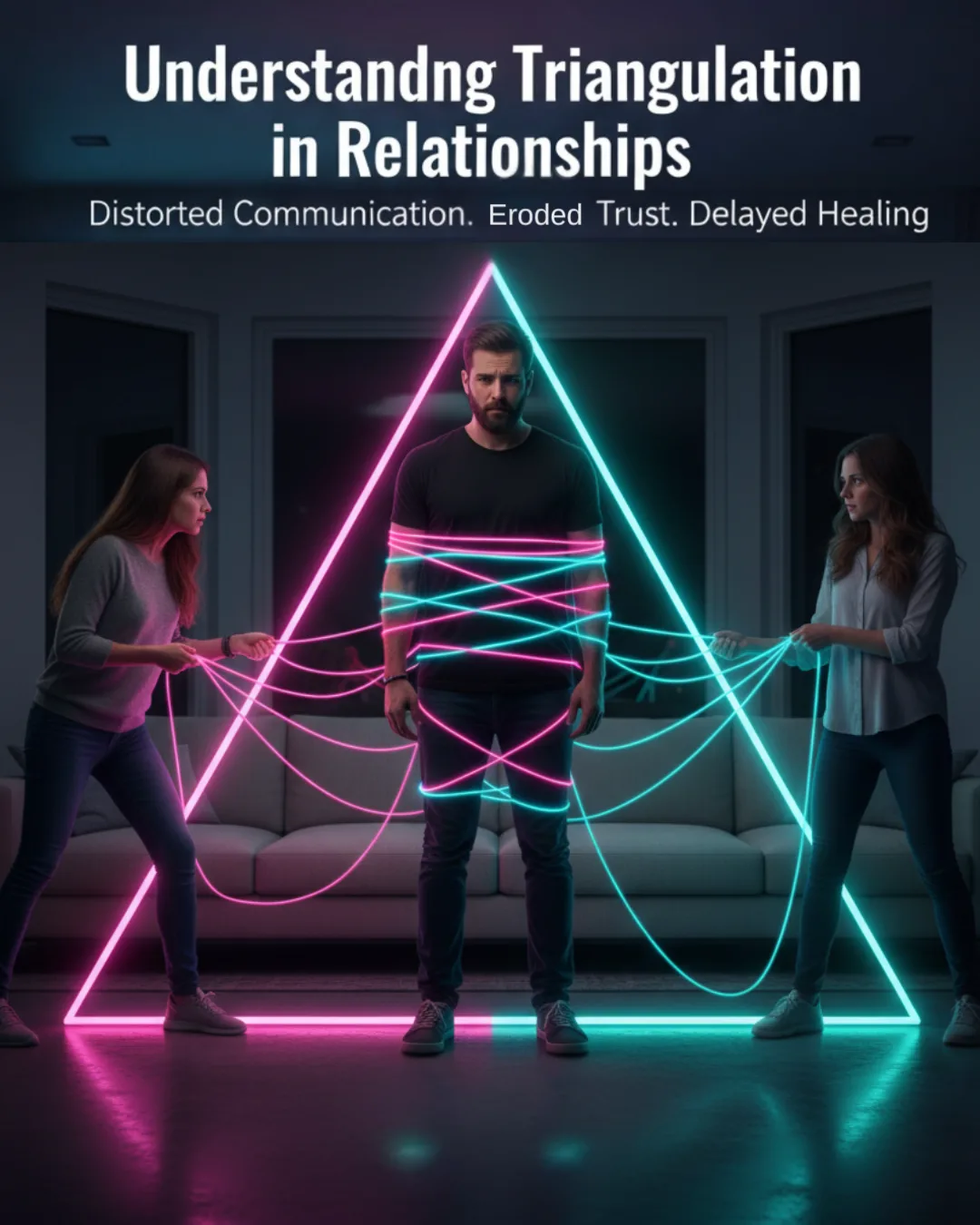What Is Triangulation?
Imagine a heated moment between two people. Instead of facing the tension head-on, one person pulls in a third—maybe to vent, to seek support, or to subtly sway opinion. That’s triangulation: an indirect communication pattern where a third party becomes a buffer, a pawn, or a sounding board.
First introduced by family systems theorist Murray Bowen, triangulation is often unconscious—but it’s powerful. It feels like a release valve, but over time, it builds pressure elsewhere in the relationship system.

Why Do We Do It?
Because it works—at least temporarily. People use triangulation to:
- Avoid direct conflict: Talking to someone else feels safer than confrontation.
- Gain an ally: Getting someone on “your side” can feel validating.
- Shift discomfort: Moving the tension elsewhere diffuses personal anxiety.
- Control dynamics: Sometimes it’s a subtle power move.
The problem? It rarely solves anything—and it often makes things worse
Triangulation Roles: Who’s Who?
In any triangle, roles tend to fall into three patterns:These roles can rotate over time, keeping the dynamic alive—and toxic.
| Role | What They Do | Hidden Cost |
| The Triangulator | Initiates the triangle to offload or influence | Avoids accountability, damages trust |
| The Third Party | Gets pulled in to listen, mediate, or take sides | Bears emotional weight, risks alienation |
| The Excluded One | Left out of the direct conversation | Feels confused, betrayed, or isolated |
These roles can rotate over time, keeping the dynamic alive – and toxic.
Real-Life Examples
- Family: A parent vents to a child about the other parent. Now the child is carrying adult stress.
- Friendships: One friend talks behind another’s back, expecting you to agree.
- Workplace: A colleague complains to you about your mutual supervisor—hoping you’ll join in.
It’s common. It’s sneaky. And it puts everyone in an awkward spot.
Why It Hurts More Than Helps
Triangulation can:
- Distort communication: Messages get filtered through bias or emotion.
- Erode trust: The person left out often senses something’s off.
- Trigger anxiety: Third parties may feel torn, overwhelmed, or manipulated.
- Delay healing: The root issue stays hidden while drama escalates.
Even well-meaning triangles cause emotional static. Left unchecked, they become a relationship norm.
Breaking the Triangle: Healthier Ways to Communicate
If you recognize triangulation in your world, here’s how to shift:
- Name it—gently: Try, “I think this is something best discussed directly.”
- Don’t take the bait: Refuse to carry messages or pick sides.
- Encourage direct talk: Invite people to speak to each other.
- Set clear boundaries: It’s okay to say, “I’m not comfortable being in the middle.”
- Check yourself: Notice if you’re the one initiating a triangle—and why.
- Get support: A counsellor can help unpack patterns and practice direct communication.
Breaking a triangle doesn’t mean abandoning people—it means choosing honesty over emotional shortcuts.
When It’s Not Malicious
Not every triangle is manipulative. Some arise from anxiety, habit, or lack of communication skills. That’s why awareness matters. When we see the pattern, we can interrupt it—with kindness, courage, and clarity.
Final Thoughts
Triangulation often feels like a path of least resistance—but it’s usually a detour away from connection. Choosing direct, respectful communication takes effort, but the payoff is huge: clarity, trust, and relationships that feel more honest and less tangled.
Share this post
Previous Post






